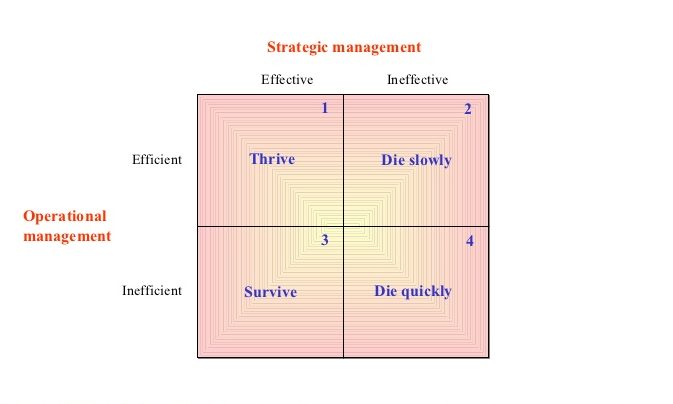Efficiency and Effectiveness as stated by Peter Drucker “Efficiency is doing things right; Effectiveness is doing the right thing.” An organization survives based on the efficiency and effectiveness of a manager/management. Efficiency is the use of financial, human, physical and information resources such that output is maximized for any given set of resource inputs, or input is minimized for any given quantity and quality of output. An efficient manager might be doing the right job but not the job right. Doing the right job does not require much time or resource. A job can be done very quickly and efficiently within time. In this case, the manager’s main aim is to get the job done within the allocated time using Continue reading
Modern Management Practices
Benefits of Corporate Retreats in Organizations
Corporate retreats can be of any type, such as a sport retreat, or a seminar-style retreat. They are to promote a feeling of teamwork and to build a better understanding among company employees. Corporate retreats can also help employees gain some problem-solving skills that lead to better teamwork and better overall productivity. These team-building activities focus on events where everyone has to work together to reach a common goal. The examples are river rafting, rock climbing, mountain climbing, everyone hiking blindfolded while holding on the same rope, team scavenger hunts, friendly competitions between company departments, etc. Corporate retreats can be customized to fit the company’s need. They can make the employees learn about what the temporary retreat goals are, as Continue reading
About United Nations Global Compact (UNGC) – 10 Principles of UNGC
The United Nations Global Compact (UNGC) is a tactical strategy scheme for companies who commit to align their operational strategies to the principles outlined by the UNGC whose main purpose for existence is to assist businesses in managing risks and opportunities presented to them in certain areas such as the environment, society and authorities like government divisions and laws. This initiative also aims to integrate their ten principles as universal to businesses and societies for mutual benefits. It is independent of the government which entails that their rules and regulations is not government mandated law though it does support and is in-line with certain government policies that mainly focuses on the social responsibilities of a corporation. Commerce, as the main Continue reading
Concept of Virtual Network Structure (VNS)
In today increasingly stiff competitive environment, organisational structure is becoming a very important role to a company in the market competition. The organisational structure is explained as the formal decision-making framework that will be done by dividing, grouping and coordinating job tasks. However, in order to design organisation structure managers need to address six key elements, those are work specialization, departmentalization, chain of command, span of control, decentralization and formalization. Secondly, for the face on the sharply environment change, HR managers should divide the tasks and then coordinate those, in essence balancing job-related specialization with group, inter group, and organisation-based integration as necessary. They also said that organisational structure defines the firm’s decision-making authority and serves as the connecting fibers Continue reading
What is a Lean Supply Chain?
A supply chain is a network of facilities, functions and activities that are involved in fulfilling customer demand. Supply chain is the network of organisations that are involved through the upstream and downstream linkages, in the different processes and activities that produce value in the form of products and services in the hand of the ultimate customer. The coordination within the entire chain is therefore very important. The supply chain covers activities on the business process, procurement, production, inventory carrying, storage, handling and distribution within an organisation. Supply Chain Management is therefore, the integration of key business processes across the supply chain for the purpose of adding value for customers and stakeholders. The size of the business determines the extent Continue reading
Triple Bottom Line (TBL or 3BL)
The concept of Triple Bottom Line (TBL or 3BL) is a popular concept that has been applied in the understanding of social duties among companies that are looking forward for the incorporation of non monetary values in their businesses. Its notion has become of much fashion in management, investing and management over the last few years. It has been explained that the ultimate success of corporations ought to be measured not just by the use of traditional financial bottom line, but need also to be measured by on the ethical and environmental factors. In fact most individuals have accepted that, organizations have a lot of responsibilities to their stakeholders to have responsible behaviors. In addition, it is also true that, Continue reading





